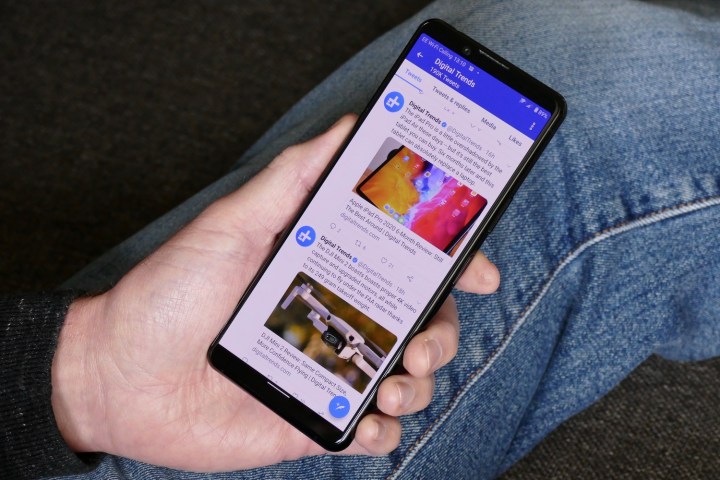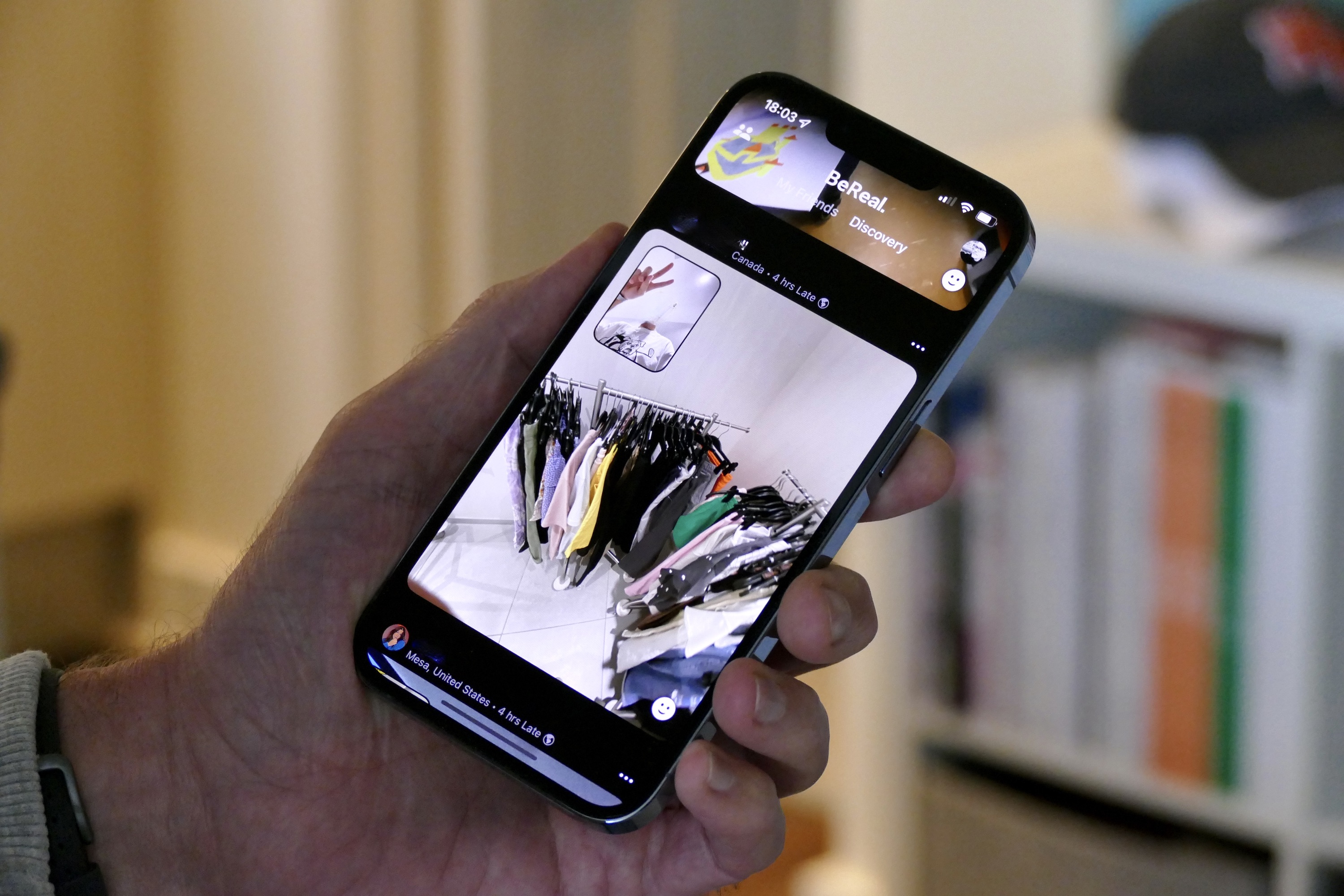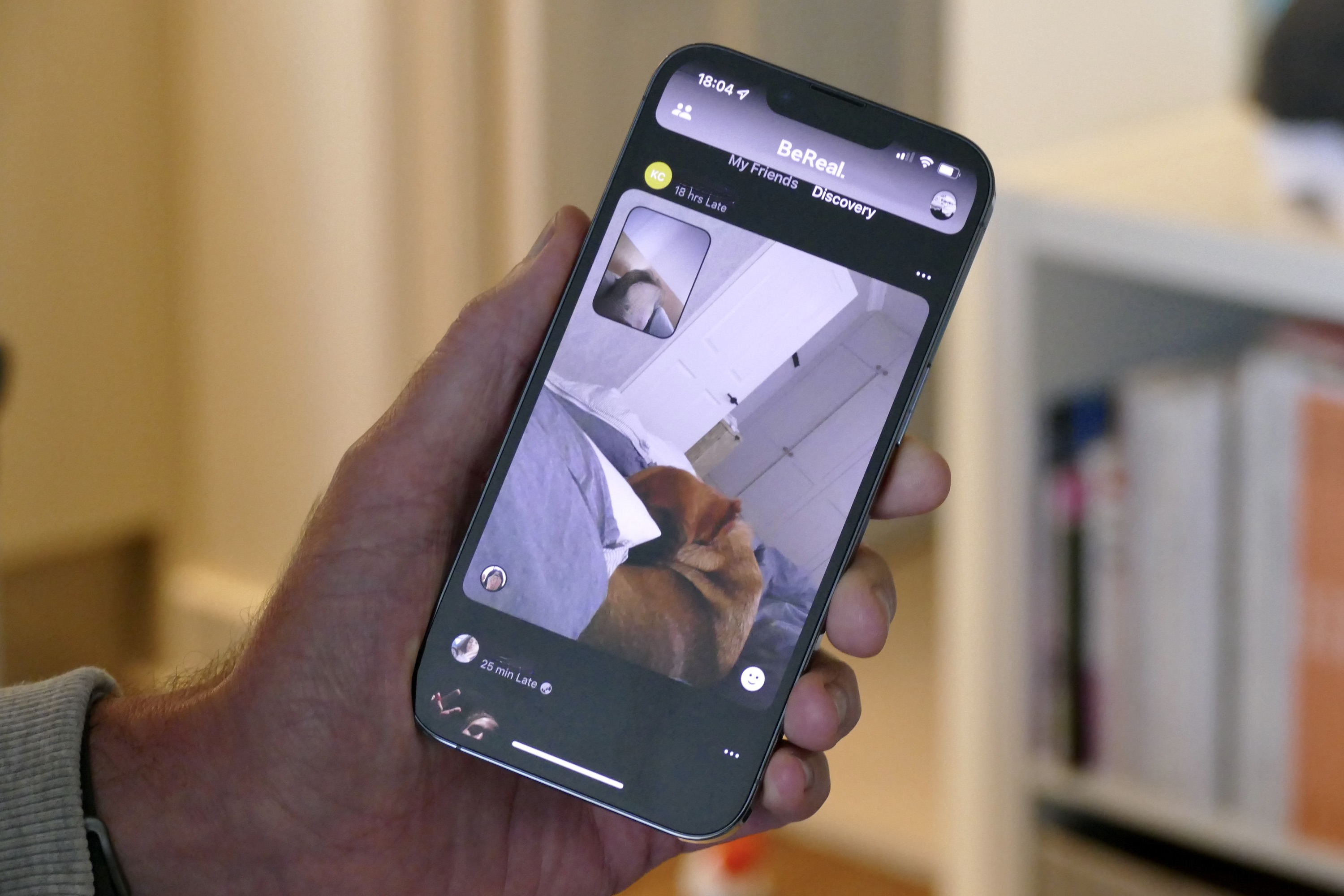The prospect of Twitter, my preferred social network of choice, dramatically changing in the near future prompted me to idly look at other options, and one that instantly caught my attention was BeReal. The app’s hook is its authenticity. By pushing you to post a photo in a random two-minute window, it promises to deliver an uncut, unfiltered view of your everyday life — essentially, it’s the anti-Instagram.
I went to it with the hope I would make real connections with genuine people, free from the fakery and careful curation of other social networks. Unfortunately, I came away missing the supposedly fake worlds I left behind because the BeReal didn’t capture the real me at all.
Two minutes per day to be real
Here’s how BeReal works: The app sends a notification at a random time once each day telling you it’s time to BeReal, by which it means it’s time to post a photo showing what you’re doing at that exact moment. You must use the app’s camera feature, which has no editing features and definitely no filters. When you tap the shutter button, it takes a photo with the rear and the front camera at the same time. The photo posted primarily shows the rear view, with your face in a small picture-in-picture view in the top corner.

Try to avoid the front camera’s stare and the app suggests taking the photo again, reminding you that your friends love to see you. Miss the notification, or decide it’s not a good time, and you can post past the window, but most users don’t seem to exploit this loophole. If you don’t post, then you can’t view everyone else being real in the app, so there are no lurkers here. It’s a simple concept, simply executed, but what’s it like?
Your life in the mirror
At first, the authenticity is intriguing, almost voyeuristic. The snaps posted show people’s true life, often in the most intimate of environments. Photos of the ceiling taken from bed are common, as are feet-up-in-front-of-the-TV shots, along with blurry images of people going about their lives with expressions ranging from harried to indifferent. If you’ve ever wondered what a random person online is really doing at one exact moment in time, BeReal will cure your curiosity.
There’s a lot of reality on BeReal. It’s initially comforting to see not everyone’s life is any more exciting than your own, and a whole lot of other people are also sitting at a desk working, having a mediocre meal, watching the TV, or performing some mundane task or another. Its evidence we’re all in the rat race together. BeReal celebrates this ordinariness, and the App Store blurb gleefully tells you this is not the app for you if you want to be famous.
It’s all very noble. But on the other hand, I already live the life I see on BeReal. Do I really need to see everyone else’s drudgery too? No, and it’s here where BeReal’s lofty goals of letting you “show your friends who you really are, for once” falls down. The app may show a periodic snapshot of my real, everyday life, but it does a terrible job of showing me as a person, and makes connecting with new people off-putting and awkward. Let me explain.
Overcoming the awkwardness
The combination of generic unedited photos of train carriages, and living rooms, offices, along with the inherently dull reality of the situations captured, makes it very hard to connect with others on BeReal. There’s no soul or emotion to the photography, a byproduct of the app’s urgency. A photo of someone’s feet while they wait for a taxi will never, ever encourage me to follow them because, essentially, I am that person, and you wouldn’t want to follow me because my life is similarly dismal.
You can only comment on your friends’ pictures, you don’t seem to be able to view previous posts, and hardly anyone adds a caption to their photos, so the entire experience is insular, disconnected, and oddly surreal. If you have a large circle of friends from your real life using BeReal, it’s probably a bit more fun, but not all of us have friends who love social media, so what’s it like making new ones on BeReal? Unfortunately, it’s a bit weird.
Worse is the awkward, voyeuristic feeling that goes along with asking to follow someone.
You can add people to your feed, but you have to request to follow them first. Because of the nature of each post and the lack of historical information, it’s impossible to see if you will like their posts in the future, or really understand anything about them at all. But worse is the awkward, voyeuristic feeling that goes along with asking to follow someone who only posted a photo of them ironing, walking to work, or staring at the TV.

How about breaking the ice with a reaction to a photo? A RealMoji, as a reaction is known in the app, is actually a selfie. You can’t anonymously like a photo, and you’re instead instructed to mimic common, positive emojis and send that as a reaction. It’s fine (just) if you’re reacting to someone who knows you personally, but less so when it’s someone you don’t, or if you are in any way socially awkward. You’ve either got to be very comfortable with being real to strangers, or have a wide network of real-life friends using BeReal for it to feel fun.
Are there any must-follow accounts? A celebrity being real, a BeReal influencer, or that newcomer who found a way to capture what makes the platform fun and unique before anyone else? If any of these exist, BeReal doesn’t highlight them, and if any do emerge, surely they will go against the ethos of the app. The typical Instagram influencer does not influence by being real, and few celebs will be desperate to take a selfie from an unattractive angle, as the BeReal photo mode can force you to do.
It’s not me
BeReal is an unflinching peek into a world as ordinary as my own. Has it freed me from the filtered, carefully curated worlds of Twitter, Instagram, and TikTok, which BeReal says are a waste of my time, and allowed me to revel in the glory of my unexceptional but true self? No, it has done the opposite.

I don’t meet someone for the first time and talk about what I was doing at just after 2 p.m. yesterday because chances are, it was very tedious. No, we talk about things we love, tell funny stories, and find common ground in interests or work. BeReal will rarely be about those things if you post when it tells you, unless you are living some kind of dream life, or you postpone sharing a photo until you are. The irony is, it’ll then be the same as other social networks.
The problems social media can cause with its unrealistic depictions of people, environments, and lifestyles are very real. Showing people there’s nothing wrong with leading a normal life is a big part of rectifying this, but BeReal doesn’t feel like a celebration of normalcy. It feels like you’re forced to show nothing but the most ordinary, unfiltered, basic parts of life, which is no more positive than pretending you’re living it up every day.
Living the unfiltered life
I’m not defined by my lunch that took two minutes to prepare and looks like the dog had its paw in it, or by the fact that most days, I’m doing the same things at the same time. Yet that’s how BeReal threatens to portray me. Less “real” social networks take you away from the crushing sameness of the life shown on BeReal, and outside the feed of pithy comments and carefully edited photos, they can be filled with hopes, aspirations, motivation, and encouragement.
Surrounding yourself with people who inspire is just as critical to building confidence as it is to avoid the unrealistic portrayals of life we can see online. I have yet to be inspired by BeReal, but people who I’ve never met in real life can inspire me, make me laugh, or help alleviate my boredom on Twitter every day.
I risk being portrayed as painfully ordinary, and while it may be true, I don’t accept it as a step forward.
I went to BeReal because, rightly or wrongly, I hoped to find a happy place that embraced the people who we really are, which would in turn encourage us to interact in a pleasant, understanding, and human way. Perhaps it would do that when you have a large circle of friends using the app, or if I really worked to overcome the app’s awkwardness, or it’ll happen in time. But sadly, until then, I risk being portrayed as painfully ordinary, and while it may be true, I don’t accept it as a step forward.
Social apps not so obsessed with reality have their own problems, but used sensibly, they can accurately reflect your personality and portray the “real” you, even when it’s not in line with your “real” life. For this reason, I’ll go back to good old fake social media because at least the person shown there is far closer to who I am, even if the life portrayed isn’t always factually correct.






